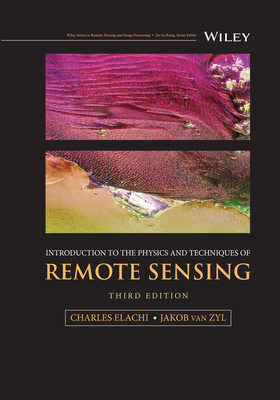Remote Sensing for Geoscientists: Image Analysis and Integration, 3/e(Hardcover)
暫譯: 地球科學家的遙感技術:影像分析與整合,第3版(精裝本)
Gary L. Prost
- 出版商: CRC
- 出版日期: 2013-12-13
- 售價: $8,460
- 貴賓價: 9.5 折 $8,037
- 語言: 英文
- 頁數: 702
- 裝訂: Hardcover
- ISBN: 1466561742
- ISBN-13: 9781466561748
海外代購書籍(需單獨結帳)
商品描述
This third edition of the bestselling Remote Sensing for Geologists: A Guide to Image Interpretation is now titled Remote Sensing for Geoscientists: Image Analysis and Integration. The title change reflects that this edition applies to a broad spectrum of geosciences, not just geology; stresses that remote sensing has become more than photointerpretation; and emphasizes integration of multiple remote sensing technologies to solve Earth science problems. The text reviews systems and applications, explains what to look for when analyzing imagery, and provides abundant case histories to illustrate the integration and application of these tools.
See What’s New in the Second Edition:
- Broader coverage to include integration of multiple remote sensing technologies
- Expanded with significant new illustrations in color and reviews of new satellites and sensors
- Analysis of imagery for geobotanical remote sensing, remote geochemistry, modern analogs to ancient environments, and astrogeology
The book covers how to initiate a project, including determining the objective, choosingthe right tools, and selecting imagery. It describes techniques used in geologic mapping and mineral and hydrocarbon exploration, image analysis used in mine development and petroleum exploitation, site evaluation, groundwaterdevelopment, surface water monitoring, geothermal resource exploitation, and logistics. It also demonstrates how imageryis used to establish environmental baselines; monitor land, air, and water quality; maphazards; and determine the effects of global warming.
The many examples of geologic mapping on other planets and the moon highlight how to analyze planetary surface processes, map stratigraphy, and locate resources. The book then examines remote sensing and the public, geographic information systems and Google Earth, and how imagery is used by the media, in the legal system, in public relations, and by individuals.
Readers should come away with a good understanding of what is involved in image analysis and interpretation and should be ableto recognize and identify geologic features of interest. Having read this book, they should be able to effectively use imagery in petroleum, mining, groundwater, surface water, engineering, and environmental projects.
商品描述(中文翻譯)
這本暢銷書《遙感技術在地質學中的應用:影像解讀指南》第三版現在更名為《遙感技術在地球科學中的應用:影像分析與整合》。這個標題的變更反映了本版適用於更廣泛的地球科學領域,而不僅僅是地質學;強調遙感技術已不再僅限於影像解讀;並且強調整合多種遙感技術以解決地球科學問題。本書回顧了系統和應用,解釋了在分析影像時應注意的事項,並提供了豐富的案例研究來說明這些工具的整合和應用。
查看第二版的新內容:
- 更廣泛的涵蓋範圍,包括多種遙感技術的整合
- 擴展了顯著的新彩色插圖,並回顧了新衛星和傳感器
- 對於地球植物遙感、遙感地球化學、古代環境的現代類比以及天體地質學的影像分析
本書涵蓋了如何啟動一個項目,包括確定目標、選擇合適的工具和選擇影像。它描述了在地質製圖和礦產及碳氫化合物勘探中使用的技術,礦山開發和石油開採中使用的影像分析,場地評估、地下水開發、地表水監測、地熱資源開採和物流。它還展示了如何使用影像來建立環境基線;監測土地、空氣和水質;繪製危險圖;以及確定全球暖化的影響。
許多關於其他行星和月球的地質製圖示例突顯了如何分析行星表面過程、繪製地層學和定位資源。本書接著探討了遙感技術與公眾的關係、地理資訊系統和 Google Earth,以及媒體、法律系統、公關和個人如何使用影像。
讀者應該能夠很好地理解影像分析和解讀所涉及的內容,並能夠識別和辨認感興趣的地質特徵。閱讀完本書後,他們應能有效地在石油、礦業、地下水、地表水、工程和環境項目中使用影像。











